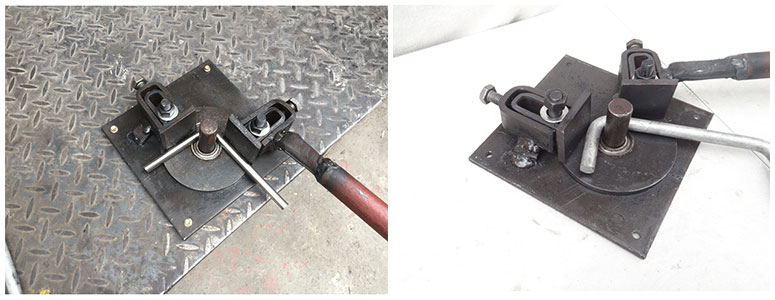
The press brake has been in fabrication shops for years, and as technology has advanced, the press brake has undergone cycles of developmental advancement. Production and accuracy of part and component making have improved drastically over the years.
Along with that improvement to the machines, the need for more complex components arose. To accommodate this need for more difficult parts to be formed into more defined and unique shapes, the industrial industry has innovated the press brake over time.

Press brake history: the original method of bending sheet metal was to attach the sheet to a piece of sheet metal mold that was properly sized. The mold was filled with sand or lead shots. The T-stake was used to pound the sheet into the shape needed. This method is still in use today, but it is a lengthy process and requires rigorous manual labor.
The cornice brake patented in 1882 was the first brake. It was a manually operated tool that clamped the sheet metal and caused it to bend in a straight line. Pan brakes, leaf brakes, and folding machines later came from these designs.
More efficient and faster versions were designed, but they worked differently than the original cornice brake.

In the early 1920s, the first press brake was developed. The original invention was a tool for crushing and pounding, and eventually, the term ‘brake’ became associated with the machine. From there on after the machine was called a pressing machine.
Now, both electric and mechanical press brakes are in use and perform the functions of the original press brake more efficiently. As for the ‘brake’ designation, it originates from the Middle English word ‘breken’ which means to change direction, break, or deflect.

Click to know more about Servo Hybrid Press Brake
With a so long history, how will press brakes develop? There have been three major changes to the press brake over the years: Automation, Coordinated Flow, and Drive Systems.
In the past, press brake operators had to spend a significant amount of time programming, inspecting, adjusting the machine and products, and test bending.
With the advances in automation, the press brake handles most of the prep-work and test offline. The machines of today can adjust to achieve greater precision and perform more accurate measurements. Machines have digital databases to allow for part program storage. Greater speed while operating is achieved by automatic press brake tool changers. Computer programs can design and set-up functions quicker.
– Coordinated Flow
Portable press brakes allow for better ease and greater speed throughout the fabrication process. Different parts and components require different processes and orders.
Smaller press brakes need less space in shops. The smaller size allows for the machine to be transported easier and the size adds more flexibility to its functionality.
The jobs of today are possible because of the adaptation of the press brake over the years. Greater ease and less production time have increased the viability of modern press brakes.
– Drive Systems
Early press brakes operated as mechanical presses with drive systems that contained a flywheel, eccentric crank, motor with a clutch, and a brake. The machines generated 30 strokes per minute and were popular in the sheet metal industry.
The newest thing to sweep the industry was the Just-in-time fad. Press brake machines needed to be more flexible in function and capable of creating the more unique orders that consumers wanted, and within a shorter timeframe. Because of the changing needs of the consumer, the hydraulic press brake was developed.
This machine remained at the forefront of production until recent years. The consumer’s needs changed again and saw the realization of the electric press drive.